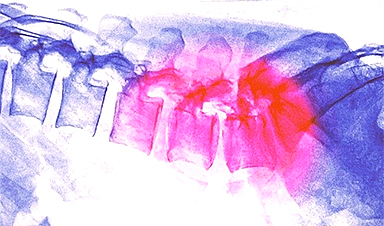The zealous immune response to injuries is known to cause paralyzing damage in spinal cord injury (SCI).
Engineers have now created unique nanoparticles that redirect immune cells away from the spinal cord, promoting regeneration that helped restore spinal cord function in mice. The study was funded by the National Institute of Biomedical Imaging and Bioengineering (NIBIB).
The spinal cord, similar to the brain, has a blood-brain barrier that guards the fragile nerves against possible damage from numerous assaults; for example, it blocks immune cells from migrating to the site of injury to clean up debris.
This blood-brain barrier gets damaged when a traumatic injury occurs in the spinal cord, and the quick influx of immune cells produces an environment that tries to rapidly shore-up the injury but, at the same time, blocks regenerative processes that can effectively reconstruct and reconnect fragile damaged nerves.
Now, a method has been developed by NIBIB-grantee Lonnie Shea, PhD, the Steven A Goldstein Collegiate Professor, Biomedical engineering, and his coworkers at the University of Michigan in Ann Arbor to overcome this problem.
This technique involves redirecting several immune cells away from the site of injury and simultaneously inducing those cells that do reach the SCI to change to an anti-inflammatory profile. This creates factors that promote a regenerative healing process, which can help restore function.
The novel method has been reported in the July edition of the Proceedings of the National Academy of Sciences.
Image Credit: iStock
News
Jamilee Baroud Podcast – Frank Boehm Interview
In her inaugural podcast, Jamilee interviews Frank Boehm of NanoApps Medical Inc and NanoApps Athletics Inc. From Jamilee's podcast: Welcome to the first episode of "In a Click". On todays show I chat with [...]
Could prosthetic limbs one day be controlled by human thought?
For almost two decades, Stanford electrical engineering professor Krishna Shenoy and neuroscientists in his Neural Prosthetics Translational Laboratory have been working on implantable brain sensors that allow them to record and decipher the electrical [...]
Some shifts in venture capital financing of biopharma companies appear underway
Silicon Valley Bank released its healthcare investments and exits trend report for the first half of 2019. It shows, among other things, oncology losing its first-place status in terms of Series A dollars raised. Venture [...]
Archilles Tendon Risk Factors
Achilles tendinopathy affects competitive and recreational athletes as well as people who are not active. The incidence of Achilles tendon rupture in the general population is approximately 5 to 10 per 100,000, but may be [...]
Video: Amplifying the impact of scientific innovations
From Frontiers Forum: How can research translate to R&D? Or a whole new business venture? In a panel session at Science Unlimited 2019, Holtzbrinck Publishing Group CEO Stefan von Holtzbrinck, Life Biosciences CEO [...]
Inline Skating Injuries
Inline skating is a popular form of exercise that can burn as many calories as running or cycling while potentially placing less stress on the joints of the lower body. More than 17 million Americans [...]













Leave A Comment